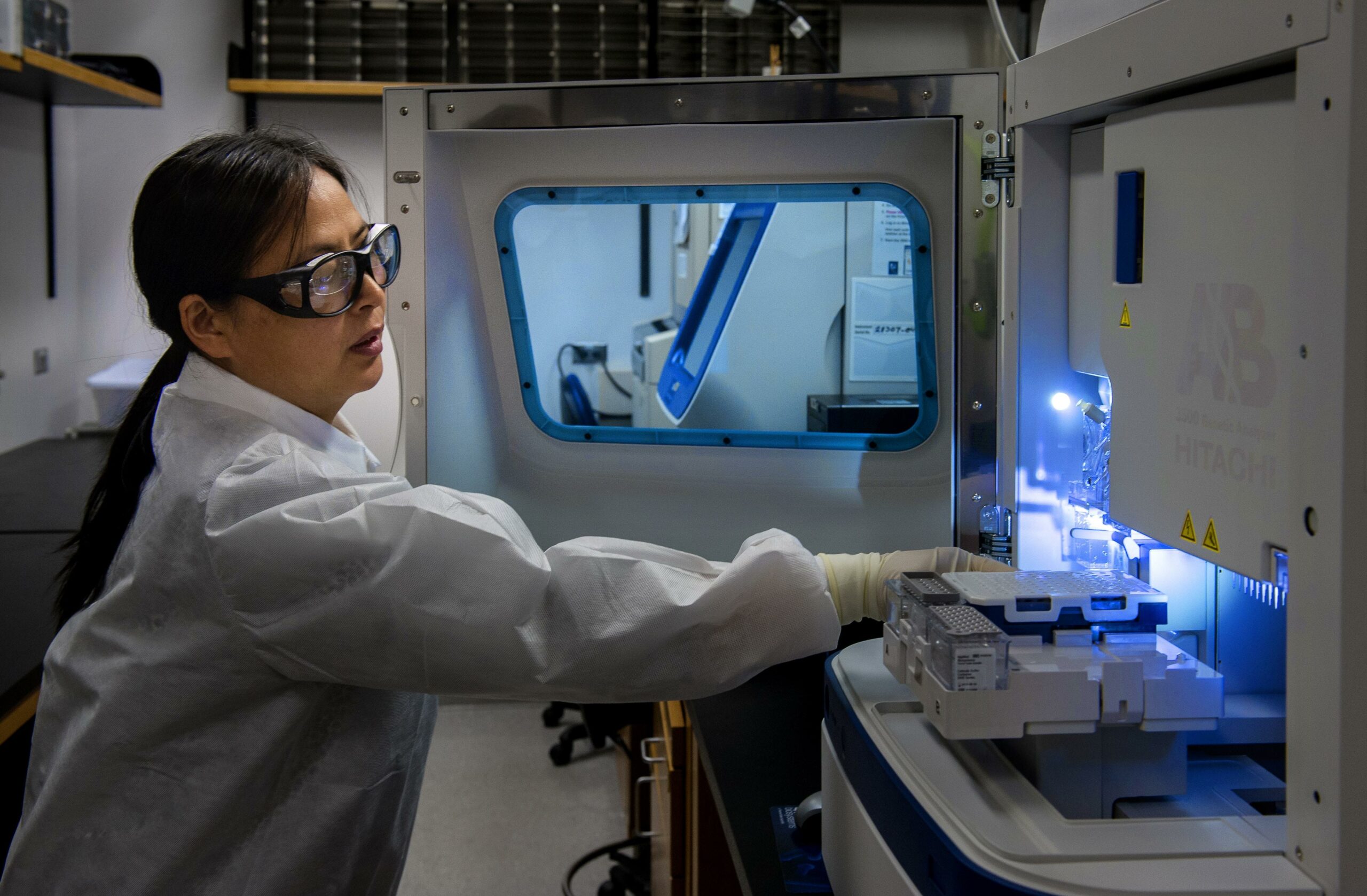Are you prepared to commence an exploration into the extraordinary realm of stereomicroscopes? Anticipate awe-inspiring discoveries as we unveil the marvels concealed within the minute intricacies of the cosmos. This article aims to provide an in-depth exploration of intriguing stereo microscope facts that will inspire astonishment regarding the scientific breakthroughs enabled by these extraordinary instruments. Anticipate to investigate the state-of-the-art developments that have brought about a paradigm shift in the domains of material science, pathology, and biology. Therefore, don your magnifying glass and read to be mesmerized by the enigmas that await revelation via the lens of a stereo microscope!

Stereo Microscope Facts
Intrigued by the marvels that stereomicroscopes reveal? By virtue of their extraordinary optical instruments, specimens can be observed in three dimensions, enabling one to investigate the minuterities of the universe. This article will reveal some astounding facts about stereomicroscopes that will truly amaze you with their capabilities.
Have you ever pondered the process by which stereomicroscopes generate images in three dimensions? Permit me to elucidate you. Stereoscopes, as opposed to compound microscopes, feature individual objective lenses and eyepieces for each eye. By establishing two distinct optical paths that converge, this ingenious design generates a three-dimensional image. It is comparable to possessing a magical window through which the microscopic world is manifested in real time.
A salient characteristic of stereo microscopes in comparison to compound microscopes is their comparatively reduced magnification. However, do not be fooled by the numbers; these microscopes are distinguished by their extended working distance. This results in increased working distance for specimens under the microscope while maintaining the resolution of the images. Due to their capacity to analyze larger entities, including crystals, circuits, plants, animals, and timepieces, stereomicroscopes are extraordinarily versatile in numerous academic disciplines.
An additional noteworthy aspect of stereomicroscopes is that neither sample preparation nor the utilization of bottom (transmitted) light are necessary. This means that an object of interest can be readily observed by placing it under the microscope after being grasped. There is no need for intricate sample preparation procedures, staining, or fixation. It’s as if you had an effortless direct ticket to exploring the microscopic universe!
Stereoscopic microscopes find widespread application in disciplines that require a three-dimensional representation, including pathology, material science, and cell biology. Stereomicroscopes, which feature an impressive range of magnifications from approximately 2x to 50x, are ideal for scrutinizing samples that do not necessitate high magnification levels. Approximately 99 percent of stereo microscope applications, in fact, lie within this magnification range.
Stereomicroscopes are remarkable for their adaptability. These instruments enable the visualization of specimens in three dimensions, eliminating the necessity for laborious sample preparation or excessive magnification.
Following this brief overview of some fascinating stereomicroscope facts, we shall delve into the most recent findings and progressions within this domain. Stereoscopes continue to expand the realm of observation as a result of continuous technological advancements and diligent research. Scientists and researchers are perpetually devising novel approaches to employ these potent instruments in their pursuit of understanding.
A noteworthy progression involves the incorporation of digital imaging systems into stereomicroscopes. This facilitates discovery sharing, image capture, and documentation. Consider the capability of capturing videos or taking high-resolution images of your observations with a single click. Additionally, by utilizing sophisticated software, it is possible to merge multiple images into breathtaking panoramic views of your specimens.
“Incorporating digital imaging systems into stereo microscopes has revolutionized the way we capture and share our microscopic discoveries.”
An additional noteworthy advancement in stereomicroscopy pertains to the integration of sophisticated illumination methodologies. Through the utilization of polarized, oblique, or darkfield illumination, scientists are able to augment contrast and unveil previously imperceptible, intricate details. The utilization of these illumination techniques expands the realm of potential applications when examining samples that are transparent or have low contrast, thereby yielding indispensable knowledge regarding their composition and structure.
As our exploration of stereo microscope facts and discoveries progresses, it is crucial to acknowledge the abundance of information accessible via the internet. For individuals seeking further insights into the realm of stereomicroscopy, reputable online resources, including laboratoryinfo.com, microscope-detective.com, microscopeinternational.com, and microscope.com, are all worth exploring. They provide an extensive collection of articles, product evaluations, and knowledgeable guidance to satiate your curiosity.
“Exploring the wonders of stereo microscopes is made even more delightful with the abundance of information and resources available online.”
In summary, stereomicroscopes are extraordinary instruments that empower us to unveil the marvels of the subatomic realm. They are indispensable in numerous scientific fields due to their versatility, simplicity of use, and capacity to provide a three-dimensional view of specimens. Bear in mind that stereoscope information is merely the beginning. Untold discoveries await, beckoning us to delve into the concealed complexities of the microcosmic universe that envelops us. Therefore, acquire a stereo microscope and initiate your personal scientific exploration.
A stereo microscope is an impressive tool that allows us to explore the fascinating world of microscopy in depth. If you’re curious to learn some mind-blowing facts about the stereo microscope, click here to uncover the secrets: facts about the stereo microscope. Anticipate awe-inspiring details as we delve into the complex mechanisms of this extraordinary scientific apparatus. Explore the manner in which it magnifies objects in a three-dimensional manner, facilitating the observation of minute details with remarkable clarity. Embark with us as we delve into the intricacies of the stereo microscope and introduce you to an entirely novel domain of scientific investigation.
FAQ
To which do you refer as a stereo microscope?
A stereoscope, which provides a three-dimensional view of a specimen, is an optical microscope. Each eye is equipped with its own objective lens and ocular, which in turn generates two distinct optical paths.
What distinguishes a compound microscope from a stereo microscope?
Although stereo microscopes have a longer working distance than compound microscopes, they have a lower magnification. Additionally, neither sample preparation nor the utilization of a bottom (transmitted) light are prerequisites for stereomicroscopes.
What is visible through the lens of a stereo microscope?
The utilization of stereomicroscopes encompasses the examination of tangible objects, including crystals, circuits, vegetation, and animals. When it comes to scrutinizing larger and three-dimensional objects, they are especially useful.
Regarding magnification, what is the standard setting for a stereo microscope?
It is estimated that 99 percent of stereo microscope applications utilize magnifications below 50x. By utilizing this magnification range, one can observe in minute detail without sacrificing field of view.
Where can additional details regarding stereomicroscopes be obtained?
For websites microscope-detective.com, microscopeinternational.com, microscope.com, microscopeworld.com, and laboratoryinfo.com contain additional details regarding stereo microscopes.
- Unlock Water’s Symbolism: A Cross-Cultural Exploration - April 20, 2025
- Identify Black and White Snakes: Venomous or Harmless? - April 20, 2025
- Unlocking Potential: Origins High School’s NYC Story - April 20, 2025















